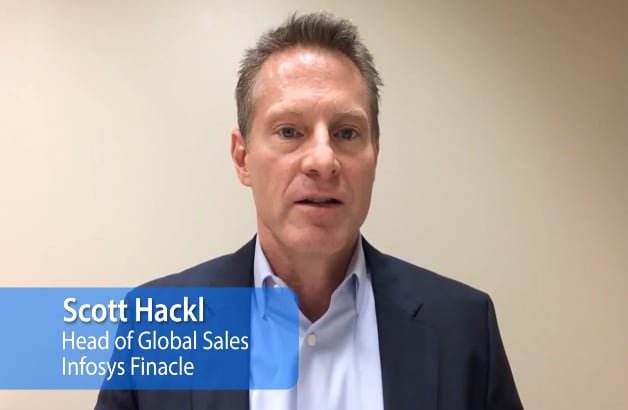Moving a step closer towards autonomous banking
“Ultimate automation… will make our modern industry as primitive and outdated as the stone age man looks to us today” – Albert Einstein, Nobel Laureate
Automation is one of the prime forces in the 4th Industrial Revolution. The latest EFMA – Infosys Finacle ‘Innovation in Retail Banking’ study reveals that pervasive automation is an important priority in banks’ digital transformation agenda. This raises an important question about how automation, and technologies such as Artificial Intelligence, will impact jobs.
Our view is that the 4th Industrial Revolution, like the ones before it, will actually energize employment by creating new, exciting, higher order opportunities to compensate for the routine jobs it will take away. Contrary to fears, automation will amplify, rather than diminish, banks’ human capital by enabling the workforce to focus on creative or advisory roles. The first wave of bank automation was devoted to process automation, smart workflow automation systems and Straight Through Processing leveraging SOA-based integration across multiple, disparate applications.
Robotic process automation came next. This automated processes which were ridden with repetitive human actions, even when the supporting applications were not fully integrated.
A wide variety of back office processes that once bogged down bank workers were dramatically streamlined. By shifting these tedious, manual tasks from humans to machines, banks continue to significantly reduce the need for human involvement, making a direct positive impact on everything from performance and efficiency to staffing issues and expenses.
However, all this time, the focus has been only on automating and making processes more efficient so there would be less need for human intervention. But now, automation has taken a big leap forward into the realm of self-learning systems, which learn automatically as processes are executed and business rules are tweaked. What’s more, the processes are no longer only between people or between people and machines. We are heading into an environment where processes with machines and software at either end are bringing up the possibility of autonomous banking.
This will enable the delivery of smarter services. Cognitive technologies, which can sense, comprehend, act and learn, are already being deployed to solve a variety of problems in financial services, from threat detection to investment advice. Going forward, they will help consumers leverage overabundant data to manage their financial lives and banks to change, grow and innovate.
In future, automation will extend beyond organizational walls. A technology, such as Blockchain, will take inter-organization automation forward as it redefines and automates traditional business processes and transactions.
But one of the biggest markers of future banking automation is machine learning, which will allow banks to constantly improve efficiency, predict market trends and raise the level of service. Mizuho Bank’s use of Pepper, a robotic concierge that can detect facial expression and emotion, to assist customers in the branch and Bank of America’s chatbot Erica, hosted on BoA’s mobile app, will analyze the customers’ financial data to generate personalized recommendations, offer a preview of things to come.
We believe 2017 will see more banks driving processes to intelligent machines so that people and machines engage more productively. This will actually empower the human workforce and produce better business outcomes.

